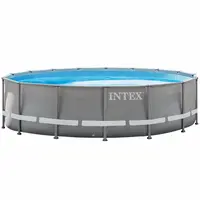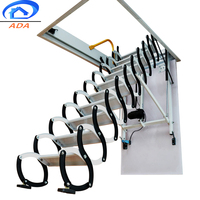
Made In Austria: Fire-retardant Highly Insulating Airtight And Stable Steel Loft Ladder / Attic Ladder: Wippro ISOTEC



















Selecting the right folding ladder is essential for enhancing operational efficiency and ensuring safety in various business environments. From emergency fireground activities to routine maintenance and inventory management, the versatility of folding ladders makes them a staple in the commercial toolkit. This guide will navigate you through the myriad of options available, helping you understand the importance of ladder functionality, material composition, safety standards, and the unique advantages they offer across different sectors. Whether you're stocking shelves or scaling heights for repairs, the insights provided here will assist you in making an informed decision for your business needs.

Folding ladders, also known as Scissor or Attic Ladders, are versatile tools on the fireground, serving multiple functions. They can be utilized for accessing different levels, such as the first floor or a rear porch roof, and are also effective for scaling fences, venting windows, pushing down ceilings, and accessing roof bulkheads to vent skylights. Their design allows for easy storage and quick deployment, making them a practical choice for various emergency scenarios.
These ladders are often mounted in the fly section of an aerial ladder due to their portability and the array of uses they offer. The compact nature of folding ladders when not in use makes them an excellent option for quick access and transport, particularly in urgent situations where time and efficiency are critical. The design of folding ladders caters to the dynamic needs of fireground operations, highlighting their adaptability and functionality in high-pressure environments.

Alibaba.com showcases a diverse range of folding ladders, catering to various business needs. Among the selection, portable aluminum ladders stand out for their lightweight and durable properties, making them suitable for both indoor and outdoor tasks. Telescopic folding ladders offer extendable sections, allowing for adjustable heights and compact storage, ideal for businesses with limited space. Multipurpose folding ladders, such as those with EN 131 certification, provide versatility with multifunctional hinges that enable use in different configurations.
For tasks requiring stability, the platform features folding ladders with a significant load capacity, some supporting up to 150kg, ensuring safety during use. Double-sided step ladders are available for activities that require access from both sides, while single telescopic ladders cater to straightforward, vertical ascents. For more robust applications, heavy-duty options made from materials like fiberglass offer enhanced durability and resistance to electrical conductivity, suitable for industrial environments.
Specialized folding ladders are also part of the assortment, including those designed for emergency situations like fire escape ladders, which are portable and easy to deploy. For domestic use, lightweight and foldable steel ladders with anti-slip pedals provide secure footing for decorating or maintenance tasks. In contrast, heavy-duty aluminum ladders are tailored for more demanding commercial applications, featuring sturdy construction and often foldable for ease of transport and storage.
When selecting a folding ladder for your business, it's crucial to consider the ladder's height. The common misconception is that a ladder reaches higher than it actually does. Ensure that the ladder size you choose matches the reach height required for your tasks.
The ladder's performance system is another vital feature. Evaluate the demands of the job and the ladder's load capacity. Consider the weight of materials you'll be carrying and the frequency of ladder use. It's essential to select a ladder that can handle the workload and user weight safely.
Materials are a key consideration in ladder selection. Fiberglass ladders offer maximum safety and durability, making them a suitable choice for heavy-duty use and electrical work due to their non-conductive properties. Aluminum ladders, on the other hand, are valued for their lightweight and strength, providing ease of transport and maneuverability.
Lastly, unique product solutions should be explored. Consider whether traditional ladders meet your comfort and safety requirements, how you'll store and transport the ladder, and if you'll be using it on uneven ground. Ladders with specialized designs can address these concerns and offer additional safety features.
When selecting a folding ladder, the choice of material is crucial for both durability and functionality. The example provided uses spruce boards and 2x4s, common materials known for their robustness. Spruce is a type of softwood that offers a balance between strength and weight, making it a practical option for a ladder that needs to be both sturdy and somewhat portable.
The dimensions of the wood used, specifically 18x150 mm for the sides and 44x94 mm for the steps, are significant as they determine the ladder's stability and load capacity. The thickness of the wood can provide additional stability, which is essential when the ladder is in use.
In the construction of a folding ladder, the attachment method is also a part of the material consideration. The use of large hinges and screws is mentioned, which are vital for the ladder's foldability and structural integrity. However, it's important to note that the type of screws used should be suitable for the material and the mechanical stress they will endure.
Lastly, the addition of safety features such as chains at the bottom steps to prevent slipping is an important material-related aspect. These components must be made of materials that can withstand wear and provide additional safety to the user.
Ensuring the safety of workers when using folding ladders is paramount, and compliance with industry standards is a critical aspect of this. The Occupational Safety and Health Administration (OSHA) has set forth comprehensive guidelines to prevent accidents and injuries. According to OSHA, portable ladders, which include folding ladders, must adhere to specific safety criteria. These ladders should be free from sharp edges, metal spurs, or splinters that could cause harm. Wooden ladders should not have any material coatings that could conceal structural flaws, while metal ladders must be corrosion-resistant or appropriately treated to prevent rust.
The design of the ladder also plays a crucial role in safety. Rungs, steps, and cleats must be parallel, level, and uniformly spaced to ensure stability and prevent missteps. For portable ladders, the spacing between these elements should be consistent, typically between 10 and 14 inches. Additionally, the width of these rungs and steps must be sufficient to provide a stable footing, with a minimum clear width of 11.5 inches being standard.
For enhanced safety, portable metal ladders should have rungs and steps designed to minimize slipping, with surfaces that are corrugated, knurled, or coated with a skid-resistant material. By following these guidelines, businesses can ensure that their folding ladders are safe for use in various operations, thereby protecting their employees and adhering to necessary safety standards.

Folding ladders are a versatile tool in various business sectors due to their portability and the convenience they offer for tasks requiring elevation. These ladders are designed to be compact when stored, yet provide the necessary height when deployed. In industries, folding ladders are often used for maintenance tasks and accessing equipment at height. They are also prevalent in the retail sector for stocking shelves and in warehouses for inventory management. The construction industry utilizes them for interior work such as electrical installations, painting, and other repair work. Folding ladders with a platform on the top and a rail guard are particularly beneficial for tasks that take longer to complete, offering a stable work surface and improved safety for the user.
Folding ladders, akin to telescopic ladders, offer significant advantages for business operations. Their space-saving design allows for easy storage, as they can collapse to a fraction of their full size, making them ideal for businesses with limited storage areas. This compactness also translates to ease of transport, fitting into small vehicles and being manageable by one person.
The adjustable height feature of folding ladders is particularly beneficial for various business tasks, allowing precise height modification to suit specific jobs. This adaptability ensures that a single ladder can serve multiple purposes, from maintenance to stocking shelves.
Safety is paramount in any business setting, and folding ladders come equipped with secure locking mechanisms and non-slip rungs to enhance user safety during operation. These features are crucial for maintaining a safe work environment, especially when the ladder is used for reaching significant heights.
Versatility is another key advantage, as folding ladders are suitable for a wide range of commercial applications, both indoors and outdoors. They can be swiftly deployed for tasks such as cleaning gutters or accessing high storage, making them a versatile tool in the business toolkit.
Maintaining your folding ladder is crucial for ensuring its longevity and performance. Begin by removing any excess dirt using a damp cloth, followed by thorough drying. If the ladder is excessively wet, a silicone spray can be applied to reach and dry all parts effectively. Should the ladder's rungs become stiff, affecting its retraction and extension, a silicone-based furniture polish can be used on the stiles to facilitate smoother movement.
It's important to handle the ladder with care during use. Avoid placing the vertical tubing of the stiles against concrete surfaces to prevent wear and tear that could lead to rusting. For safety and maintenance, ensure the ladder's plastic couplings are resting against a stable surface, either vertical or horizontal.
There are also key practices to avoid. Do not use the folding ladder horizontally as a plank, which can weaken its structure. It's not designed for use as a fire rescue ladder, as the downward force can be too great for the pins. Avoid lubricating the rungs with WD40 or similar products, as this can attract dirt and clog the mechanism. Finally, never leave the ladder outside in the rain to prevent corrosion. Following these guidelines will help maintain the ladder's condition and prevent warranty invalidation.
In conclusion, the right folding ladder is a pivotal investment for any business requiring safe and efficient access to elevated areas. The guide has underscored the importance of considering various factors such as the ladder's height, load capacity, material, and compliance with safety standards like those set by OSHA. From the robustness of spruce wood to the non-conductive safety of fiberglass, the material of your ladder impacts its functionality and longevity. Moreover, the adaptability of folding ladders to different business sectors, coupled with their space-saving design and safety features, offers substantial benefits for commercial operations. Proper maintenance and storage are the final, critical steps to ensure the durability and reliability of your ladder. By adhering to these guidelines, businesses can secure a tool that not only meets their immediate needs but also ensures the safety and productivity of their workforce over time.